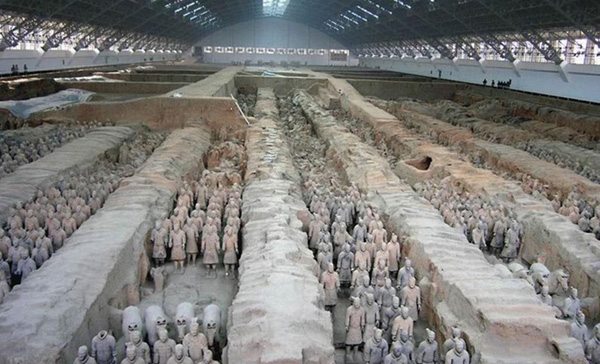Qingming Festival, which falls on April 5 this year, is a time to pay respects to ancestors and commemorate those who have died.
In this edition of Now and Then, we look at changing trends in Chinese funerals.
Then: Old rituals
In Chinese tradition, a funeral is a complicated and solemn rite. People made preparations for the afterlife in advance, choosing a site for their burial and preparing a coffin and burial clothes. Emperors would spend decades building mausoleums for themselves at tremendous cost.
 |
|
The Mausoleum of Emperor Qin Shi Huang, the first emperor of the Qin Dynasty (221-206 BC), took 30 years to finish. [Photo/File photo] |
To a degree, funeral rites and burial customs are determined by the age of the deceased, cause of death, position in society and marital status.
Rites for an elder must follow a prescribed form befitting a person's status and age and must be carried out even if it means the family goes into debt.
Preparations often begin before death has occurred. When a person is on his/her death bed, a coffin will often have already been ordered from an undertaker who oversees all funeral rites.
Now: A sea change
More Chinese families are opting to bury their loved ones at sea because of an increase in local government subsidies and services for the practice.
In cities such as Beijing and Shanghai, governments offer free sea burials or cash subsidies to families. When sea burial was initiated in the 1990s, few were willing to let go of the remains of their dead but there were more than 1,200 such funerals last year.
